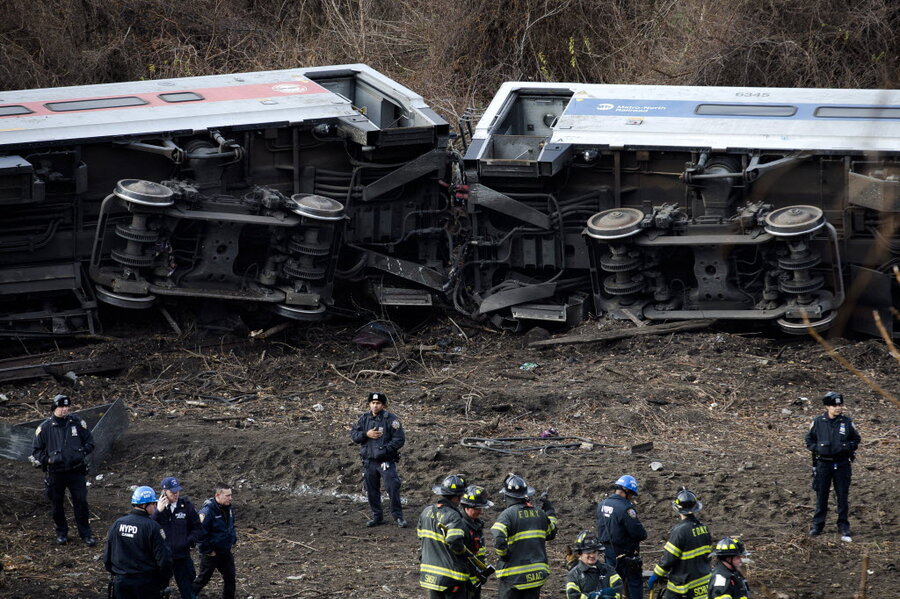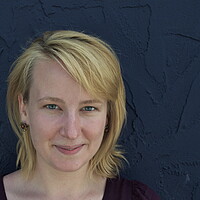Clues sought to fatal train derailment in New York
Loading...
Early Monday morning, cranes pulled toppled commuter cars back onto tracks as federal investigators began piecing together a picture of what caused a Metro-North commuter train to derail in New York's Bronx borough 24 hours earlier.
The National Transportation Safety Board (NTSB) investigation aims to find out why seven passenger cars and their locomotive cascaded over the train tracks as they neared the end of a nearly 80-mile commute from Poughkeepsie, N.Y., south to Grand Central Station in New York City.
The accident killed four people and injured about 60 others.
The scene “looked like a toy train set that was mangled by some super-powerful force,” said Gov. Andrew Cuomo in a phone interview Sunday with CNN.
"As the cars were skidding across the ground, they were actually picking up a lot of debris; a lot of dirt and stones and tree limbs were going through the cars, so it actually looked worse up close," Governor Cuomo told NBC’s "Today" show Monday morning.
The NTSB's Earl Weener said investigators are checking tracks, signals, and equipment and are looking at both the train’s maintenance records as well as personnel records to try to figure out what caused the accident, WNYC reported.
NTSB investigators are expected to be on-site for seven to 10 days.
Sunday’s accident is the second on the Metro-North line in six months and occurred about 2,000 feet from where the previous crash happened. In July, a CSX freight train carrying tons of garbage derailed. The Metropolitan Transportation Authority (MTA), owned by the state of New York, runs the Metro-North commuter rail.
The two crash sites both lie along a curve in the train tracks where the Hudson and Harlem rivers meet in the Bronx near Spuyten Duyvil station. The MTA considers this area to be a “slow zone” because of two tight curves that come in quick succession. In the area, the speed limit drops to 30 m.p.h., compared with 70 m.p.h. for the track well ahead of the curves, said Mr. Weener.
Cuomo said he suspects that speed will turn out to be a contributing factor in the accident, although he also cited equipment failure, operator error, and track problems as other possible causes. “The trains negotiate that turn dozens of times all day long, so there has to be something else here,” he said.
The NTSB has been urging railroads for decades to install technology that can stop derailment from occurring as a result of excessive speed.
Congress in 2008 approved a rail-safety law that gave commuter and freight railroads until the end of 2015 to install the technology, known as positive train control. PTC is aimed at preventing human error – the cause of about 40 percent of train accidents. But the systems are expensive and complicated. Railroads are trying to push back the installation deadline another five to seven years.
Metro-North is in the process of installing the technology. It now has what's called an "automatic train control" signal system, which automatically applies a train's brakes if an engineer does not respond to an alert that indicates excessive speed. These systems would slow trains, but not bring them to a halt.
Authorities do not yet know how fast the train was traveling, but they located a black box, which records the speed of trains, and it should show how fast the train was traveling at the time of the crash, said Weener.
The number of Metro-North train accidents has been falling for the past decade, according to a Federal Railroad Administration database. However, injuries from accidents are up dramatically this year, and accidents this year are also on the rise, the Associated Press reported.
The deaths of four passengers in Sunday's derailment are the first in an accident in the MTA’s 31-year history.
A part of the Metro-North line between the Bronx and parts of New York’s Westchester County could be closed for a week or more. Service was suspended on Monday on the Metro-North’s Hudson line, which serves 26,000 on an average weekday, according to the MTA website.
This report includes information from the Associated Press.






